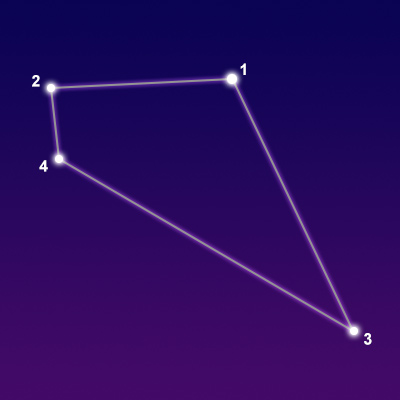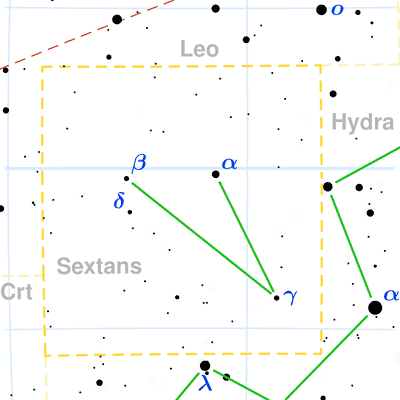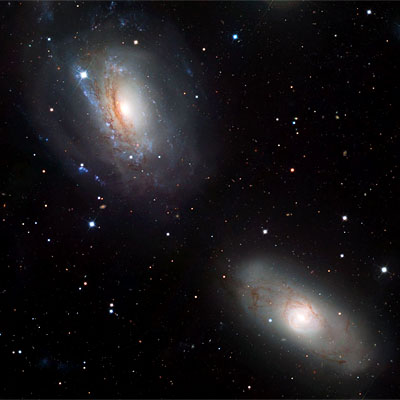Pronunciation:
(SEKS-tunz)Abbreviation:
SexGenitive:
SextantisRight Ascension:
10 hoursDeclination:
0 degreesArea in Square Degrees:
314Crosses Meridian:
9 PM, April 5Visible Between Latitudes:
80 and -80 degreesThe constellation Sextans, the sextant, is best seen from the southern hemisphere from January through May and is completely visible at latitudes between 80 degrees and -90 degrees. It is a mid-sized constellation covering an area of 314 square degrees. It ranks 47th in size among the 88 constellations in the night sky. It is located near the celestial equator and is bordered by the constellations Crater, Hydra and Leo. It is a dim constellation that can be challenging to find even under ideal conditions.
There are no myths associated with Sextans. It was introduced by the Polish astronomer Johannes Hevelius in 1687. Its name is Latin for the astronomical sextant, an instrument made by Hevelius to help measure the positions of the stars. The constellation was originally named Sextans Uraniae after the instrument he used until it was destroyed by a fire in his observatory in 1679. Hevelius preferred the sextant instead of the telescope when making his observations of the stars.

points of interest below © Sea and Sky

© Torsten Bronger CC BY-SA 3.0
Beta Sextantis
Gamma Sextantis
Delta Sextantis
N/A
N/A
N/A
Blue-White Dwarf Star
Triple Star System
Blue-White Dwarf Star
5.00
5.07
5.19
Sextans is an extremely faint constellation with only one star brighter than magnitude 5. The brightest star in the constellation is Alpha Sextantis with a visual magnitude of only 4.48. It is a blue-white giant star located approximately 287 light years from Earth. It is considered to be an “equator star” because it lies within a quarter of a degree from the celestial equator. The second brightest star is Beta Sextantis with a magnitude of only 5.00. It is a blue-white dwarf star that sits about 345 light years from our solar system. Gamma Sextantis is the third brightest star with a magnitude of 5.07. It is a triple star system located some 262 light years away.
Sextans contains no Messier objects but does contain a few notable deep-sky objects. NGC 3115 is a lenticular galaxy that appears nearly edge-on to our line of sight. Sometimes referred to as the Spindle Galaxy, it is located only 31.6 million light years away from Earth. It is also the nearest galaxy believed to contain a supermassive black hole at its center. NGC 3169 and NGC 3166 are a pair of spiral galaxies that appear very close together. They are only 50,000 light years apart and will eventually merge to form a single larger galaxy. Sextans A and Sextans B are both irregular galaxies. Sextans B is one of the smallest irregular galaxies known to contain planetary nebulas.

© ESO/Igor Chekalin / CC BY 4.0



